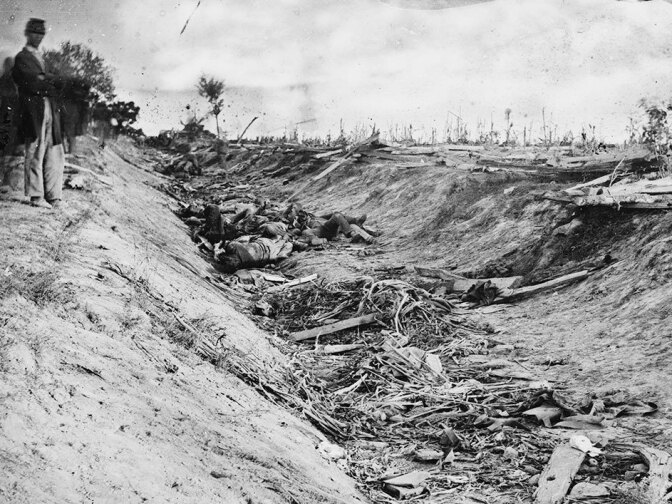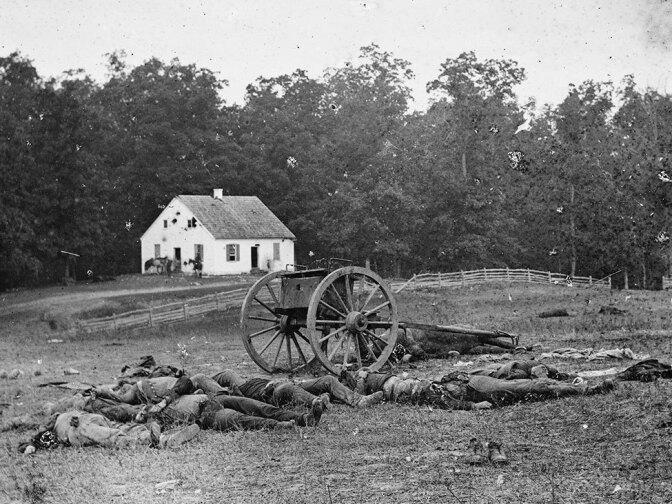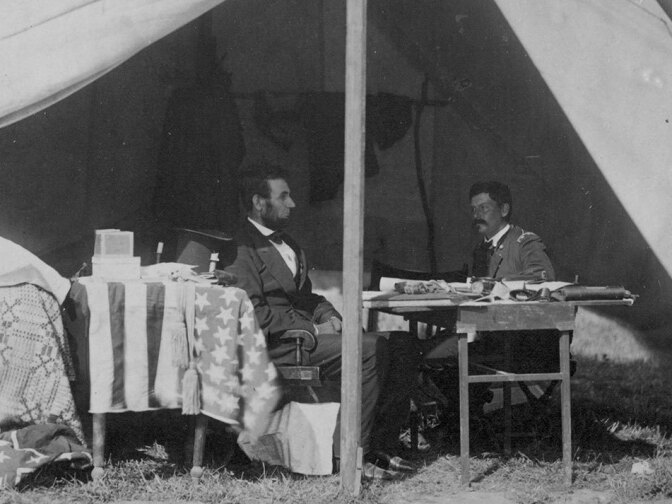With our free press under threat and federal funding for public media gone, your support matters more than ever. Help keep the LAist newsroom strong, become a monthly member or increase your support today.
Antietam 'Death Studies' Changed How We Saw War
In mid-September 1862, the Civil War was only a year and a half old, and many Americans in the North and the South still clung to the view that this war was a noble, glorious, even romantic undertaking. That notion was shattered forever when Alexander Gardner and his assistant James Gibson, working for photographer Mathew Brady's firm, came to Antietam Creek near Sharpsburg, Md.
Robert E. Lee's Army of Northern Virginia and George McClellan's Army of the Potomac had collided there in a battle that was, and remains, the nation's bloodiest day. It was called a Union victory, though the cost on both sides was enormous — 23,000 men killed or wounded.
Up until that time, war photography had primarily depicted only the landscape and individual commanders, long after the fighting was done. Gardner and Gibson arrived at the battlefield before all of the soldiers' bodies had been buried, and they recorded a series of what they called "death studies" that, for the first time, showed the bloated, mutilated corpses that are the true aftermath of conflict.
The exhibition of those images, only a month after the battle, caused a sensation. A reporter for The New York Times wrote, "Mr. Brady has done something to bring home to us the terrible reality and earnestness of war. If he has not brought bodies and laid them in our dooryards and along the streets, he has done something very like it."
Copyright 2021 NPR. To see more, visit https://www.npr.org. 9(MDA1OTI3MjQ5MDEyODUwMTE2MzM1YzNmZA004))












